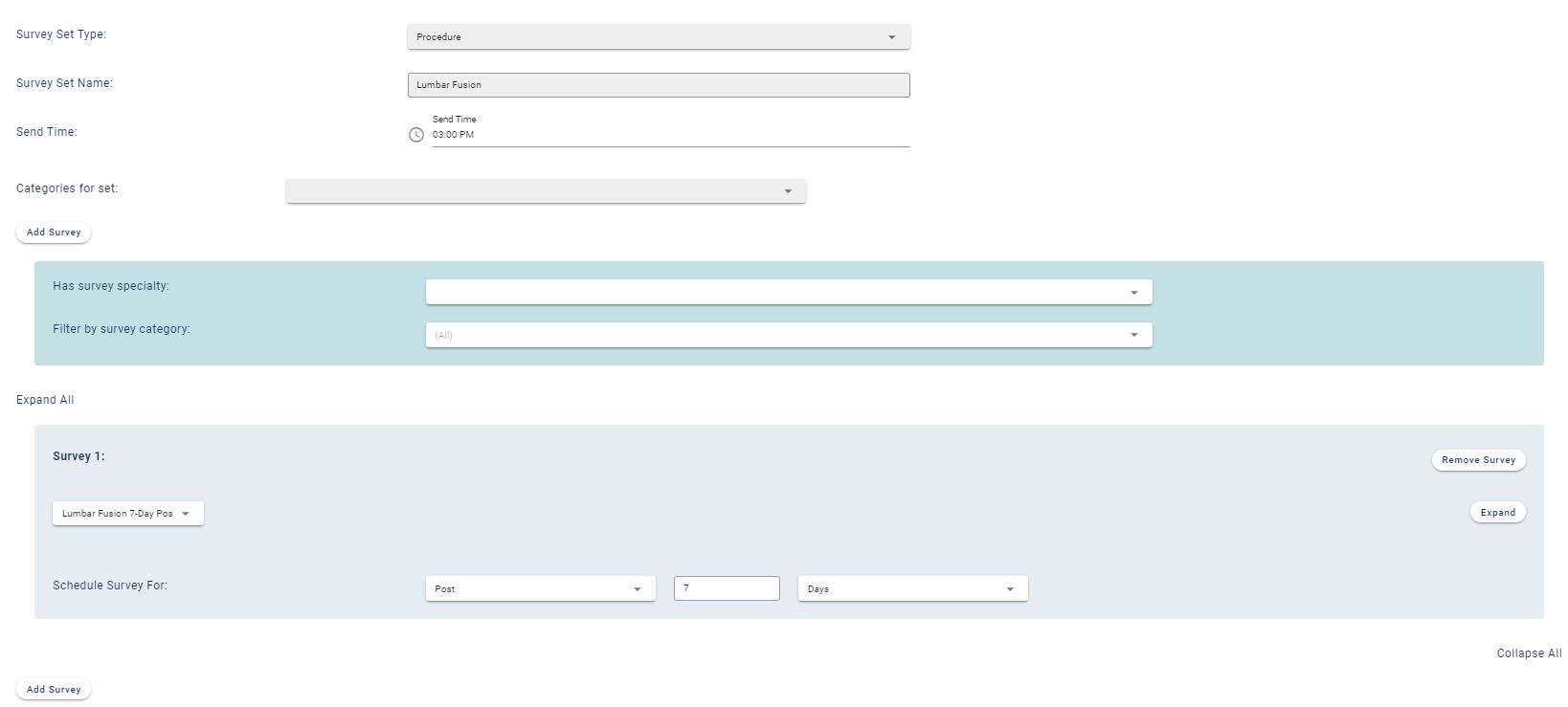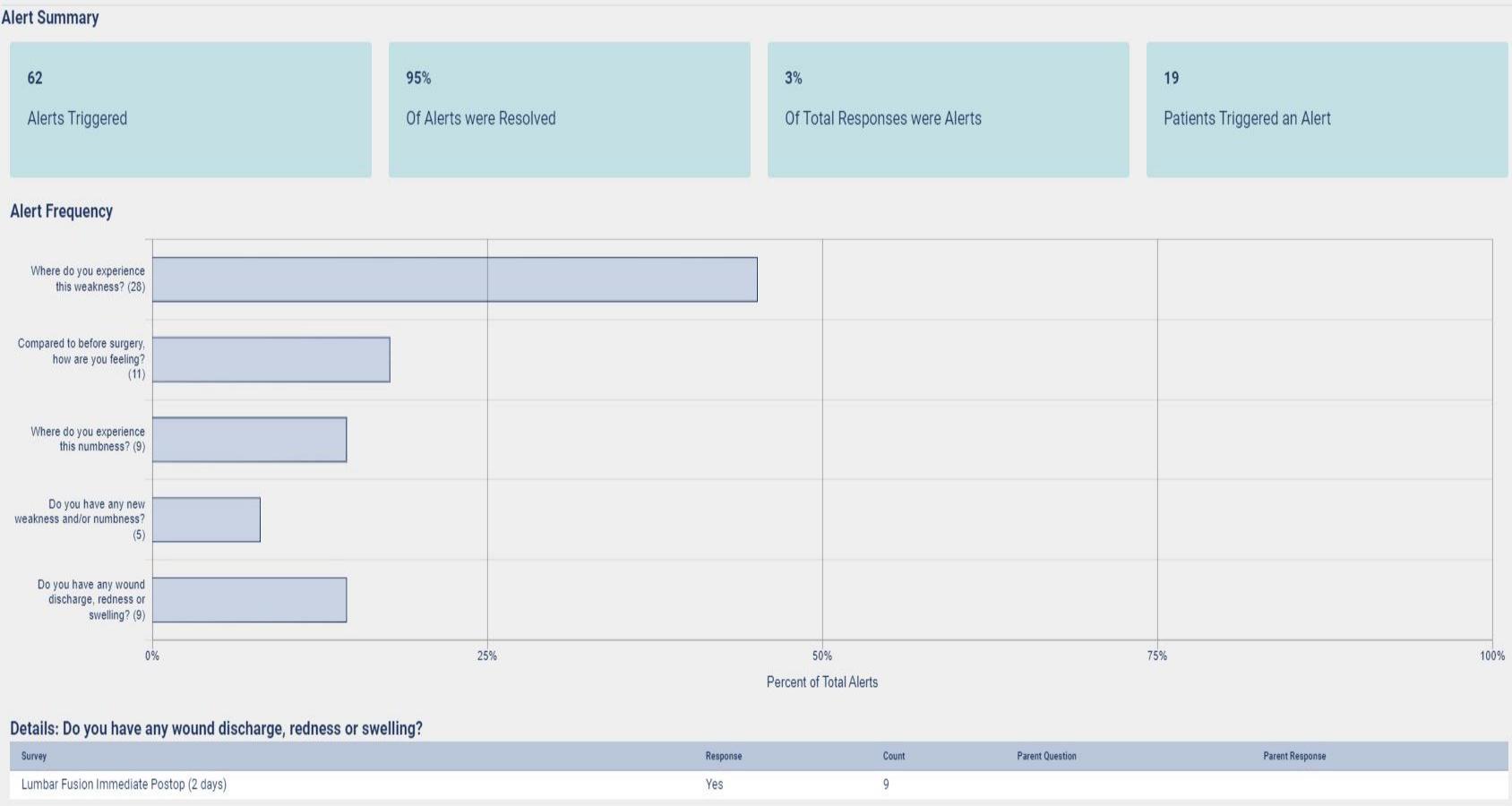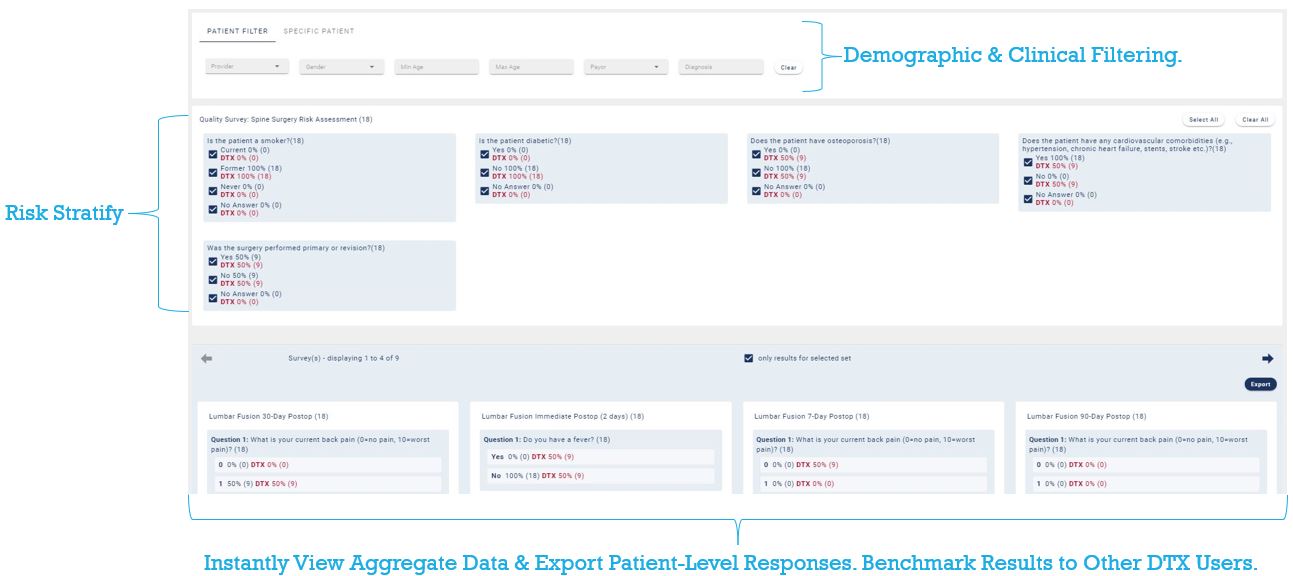
Product Description
Question Sets

Users can create question sets of any kind through an easy-to-use interface. Question sets can be sent to the patient (Patient Set) or physician (Quality Set) and can be linked to a diagnosis and/or a procedure. In this way, users can create intuitive outcomes in minutes. If linked to a procedure (Procedure Question Set), the user can determine at what time points before and after the procedure they would like the question set to be automatically sent. If linked to a particular diagnosis/medical condition (Individual Question Set), the user can determine the date range and frequency of the question set. Surveys can be scheduled ahead of time or sent to the patient instantly.
When designing question sets, there are multiple answer choice formats and customizable survey branches to choose from. Surveys adjust based on a respondent’s answer. For example, if a post-operative patient is asked whether their wound is red and they answer “no”, they will be prompted with the next question. However, if they answer “yes”, they may be asked if they have any wound discharge and a temperature over 100°F.
Built-In Responsiveness
Alerts

Powerful Information at Your Fingertips
Analytics

In the DTX web portal, individual patient responses can be viewed. The Dashboard section of the portal enables a deep dive of all stored data. Advanced analytics shows aggregate responses for selected patient data; the data is easily filterable and can be viewed by question set type, question set name, demographic measures, and other factors. Physician data can be merged with patient outcome data in real-time allowing for instant risk stratification.
In addition, DTX allows users to compare outcomes from similar disease processes among other registered user groups. Users can benchmark themselves by comparing their results to a “DTX Average,” an aggregate of results from all relevant user groups. All dashboard data can be exported to Microsoft Excel for further analysis and viewing of selected data at the patient level.

